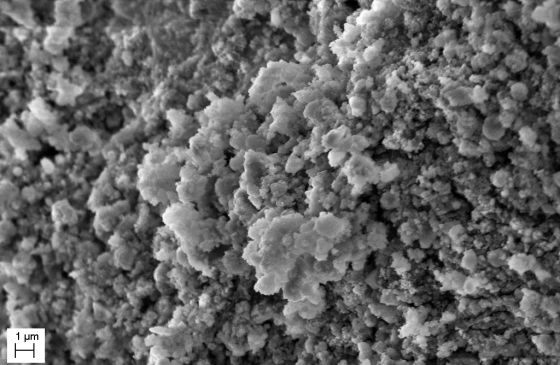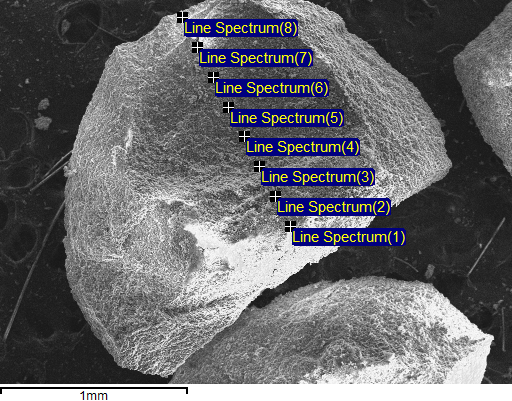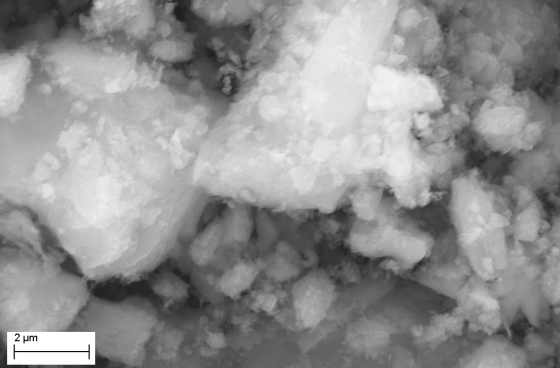Targets of the project
Identify which elements were present in the sample.
Surface amount of silicon.
Definition of a protocol for future analyzes.
Since the sample was in the form of spheres with a radius of about 1 mm, the sample was crushed in order to make its composition uniform in volume. Subsequently, a SEM / EDX analysis was performed to define its composition with precision.

Since silicon penetrates from the outside of the catalyst towards the inside, its quantity may not be constant over the volume of the particle, and the result obtained in the first stage of the analysis may not reflect other analyzes performed without grinding the sample. For this reason, a catalyst particle was dissected, and a silicon concentration profile was derived depending on the distance from the surface. Indeed, large variations in concentration were found.

The client was interested in defining a quick protocol to give unique answers in the case of future analyzes. Based on the data collected, and further analyzes carried out for the occasion, it was possible to define this protocol.

-
Target 1
Elemental analysis
Since the sample was in the form of spheres with a radius of about 1 mm, the sample was crushed in order to make its composition uniform in volume. Subsequently, a SEM / EDX analysis was performed to define its composition with precision.

-
Target 2
Quantità superficiale di silicio
Since silicon penetrates from the outside of the catalyst towards the inside, its quantity may not be constant over the volume of the particle, and the result obtained in the first stage of the analysis may not reflect other analyzes performed without grinding the sample. For this reason, a catalyst particle was dissected, and a silicon concentration profile was derived depending on the distance from the surface. Indeed, large variations in concentration were found.

-
Target 3
Analysis protocol
The client was interested in defining a quick protocol to give unique answers in the case of future analyzes. Based on the data collected, and further analyzes carried out for the occasion, it was possible to define this protocol.

Result
Should the customer wish to carry out analyzes on subsequent batches of exhausted catalysts, thanks to the protocol defined by us, he will be able to quickly know their status by requesting a single SEM / EDX analysis.